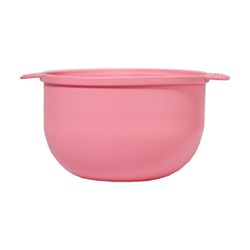Disposables for depilation
The emergence of the dress code
Depending on the profession, the style of clothing was very different, at least it was always easy to distinguish a baker from a chimney sweep. In this case, no special dress code development was required, because workers could not afford to dress like workers, and representatives of such professions as a doctor and a lawyer proudly followed corporate fashion.
The need for a professional dress code arose when certain categories of workers could dress better than might be expected of them. Back in the 18th century, the author of the immortal «Robinson Crusoe» Daniel Defoe drew attention to the fact that the domestic servant, who was given the opportunity to dress up, began to work poorly. The writer even dedicated a brochure to unscrupulous maids: «The maids are now so in need of it that their wages have increased from 30-40 shillings a year to six, no, eight pounds, and they ask for money in advance. It is now difficult to distinguish the maid from the hostess by clothes, sometimes the maid dresses better than her mistress». Defoe's appeal did not resonate much, because in the 18th century it was customary to dress up servants as best as possible in order to show themselves. However, in the 19th century, the writer's ideas triumphed, and they demanded modesty and neatness from the servants. The high society of European countries developed their own unwritten dress code, according to which people of «their circle» were unmistakably identified, followed by the aristocracy and other social groups who were also interested in the recognition of their own people. Professional communities identify with the style of dress. For example, Parisian milliners, seamstresses and flower girls were called grisettes because they preferred clothes made from cheap grisette fabrics, and later they were called grisettes throughout Europe. Back in the 19th century, the public got used to the fact that doctors wear white coats and chefs wear high caps.
In the same century, a movement arose against the unwritten rules of the wardrobe. Bored Victorian ladies, hungry for something new, became the instigators of the struggle for freedom in choosing clothes. In the 50s of the 19th century, American Amelia Bloomer took the world by surprise and explained in the pages of her women's magazine that a woman has the right to wear trousers, when, of course, a skirt is worn over the trousers. Mrs Bloomer herself designed the cut of the new clothes and, surprisingly, began to wear a short skirt with some kind of pants underneath. Over time, Amelia Bloomer switched to ordinary dresses, but the example turned out to be contagious, and in 1881 the banner of her ideas was taken up by the society of rational clothing, founded in London by Countess Herberton. Members of the society called for the abandonment of corsets and similar items that impede movement, but they did not go further. However, the idea was born that traditional «decent» and «appropriate» clothing violates individual freedom.
In the 1970s, employers resisted the onslaught of a counterculture that conquered the masses with honor: they imposed strict dress codes and discovered once and for all that an employee with a mohawk on his head could not serve customers. And in the early 1980s, when a generation of young yuppie careerists emerged, employees themselves tried to surprise their bosses with matching business suits. During the Reagan and Thatcher era, the greatest spiritual unrest in the West in the 1960s and 1970s faded away. The introduction of strict clothing styles sobered society.
As for the beauty industry, an apron is an indispensable item in the wardrobe of manicurists and hairdressers. Clothing in the service sector is always complemented by aprons. This accessory protects the main garment from dirt. Aprons protect from polish drops, nail areas and liquids. Serve for storing various little things. Therefore, as a rule, a large number of pockets are sewn on them.






